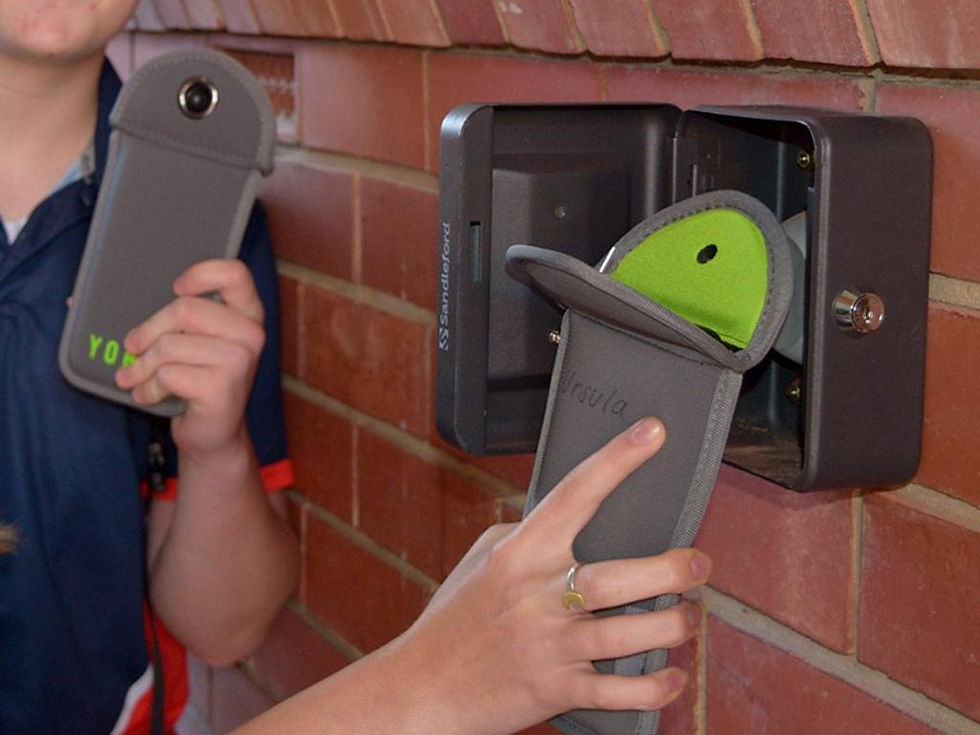First Look: Statewide Cellphone Ban
- Chloe Mosquera

- Jun 14
- 2 min read
Updated: Jul 13

Following the recognition of tenured teachers, the board transitioned to a discussion on the proposed statewide “Bell to Bell” cell phone ban.
For context, New York Governor Kathy Hochul recently introduced this policy with the stated goal of fostering a more focused and less distracted learning environment. According to the governor’s official site, the policy grants schools flexibility in how they enforce the ban, and it includes state-funded grants to support implementation.
One neighboring school has already piloted the use of Yondr pouches—a tool designed to lock students’ phones in secure cases throughout the school day, which are unlocked by administrators at dismissal. During the board meeting, members discussed the pros and cons of adopting this specific method, weighing both its effectiveness and its financial implications. Questions were raised about the cost burden on taxpayers and whether such restrictive methods would yield measurable academic benefits.
From a policy perspective, I see both the promise and limitations of this approach.
As a student, I recognize that restricting access to phones could reduce distractions. However, I also understand how resourceful students can be. In environments where students are disengaged, they often find alternative ways to pass the time—whether that’s doodling, passing notes, or, as I once did, playing Battleship on scrap paper with a friend during a dull class. In other words, technology isn’t the root of disengagement—it's a symptom. That said, if the ban helps students take greater ownership of their learning over time, there could be long-term academic gains.
On the other hand, there are valid safety and logistical concerns. Many students, including myself, rely on immediate phone access to stay connected with parents—especially in households like mine where communication is critical during the day. Emergencies, last-minute schedule changes, or simply the comfort of knowing we can reach a parent quickly shouldn’t be dismissed. Rather than an all-or-nothing policy, more moderate alternatives—like phone cubbies or teacher-enforced classroom rules—could strike a better balance between structure and trust.
Ultimately, while the intention behind the ban is understandable, I question whether it’s equitable or effective to impose a one-size-fits-all restriction across all high schools. At this stage, students are old enough to make decisions about their own learning. Punishing the majority for the misuse of a few may not lead to the cultural shift in focus and discipline that the policy aims to achieve. And while concerns like cyberbullying are real, they often extend beyond school hours and won't necessarily be solved by phone bans during class.
-Chloe Mosquera
Stay tuned for Part 3, where we explore how the Zero-Emission Bus Legislation will come into effect—and what it means for students and schools.
Sources
Link : https://www.governor.ny.gov/




Overall, I support the idea of restricting phones. Beyond the distraction aspect, some students can be mean and take unflattering photos of others without permission. Even worse they use them for bullying. Perhaps the students and parents could communicate through school email. I’m not sure if it’s logistically possible, from an IT perspective, to have a parent/gaurdians registered email bypass the firewall. Allowing important communication with a student during school hours.